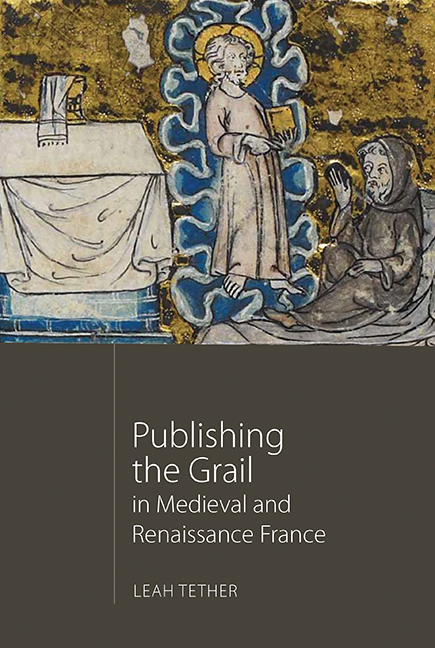Book contents
- Frontmatter
- Contents
- List of Illustrations
- Acknowledgements
- List of Abbreviations
- Miscellaneous Frontmatter
- Introduction: Grail Literature in France c. 1180–1530
- 1 Publishing in the Middle Ages and the Renaissance
- 2 Blurbing the Grail
- 3 Disclosing the Author
- 4 Re-packaging the Grail
- 5 Patronage and Promotion
- Conclusion
- Appendix: Timelines of Composition and Production
- Bibliography
- Index
- Arthurian Studies
- Frontmatter
- Contents
- List of Illustrations
- Acknowledgements
- List of Abbreviations
- Miscellaneous Frontmatter
- Introduction: Grail Literature in France c. 1180–1530
- 1 Publishing in the Middle Ages and the Renaissance
- 2 Blurbing the Grail
- 3 Disclosing the Author
- 4 Re-packaging the Grail
- 5 Patronage and Promotion
- Conclusion
- Appendix: Timelines of Composition and Production
- Bibliography
- Index
- Arthurian Studies
Summary
The professionals of the book trade manipulated the response of medieval listeners and readers just as modern editors are capable of manipulating ours by the presentation of texts in a particular way.
My aim in this book has been to use publishing concepts as a lens through which to enhance and enrich our understanding of pre-print and early print production of French Grail literature, and my study has achieved the objectives set out in the Introduction. Whilst it cannot by its nature be completely exhaustive, and of course there remain further avenues to be explored I hope that I have offered new and useful insights into the developing tastes of the audiences for Grail literature in medieval and Renaissance France, and have identified and analysed some of the most impactful tactics that medieval and early-modern publishers in France used to target and, in a sense, manipulate these audiences.
Chapter 1 synthesised and evaluated existing scholarship on the issue of publication in Middle Ages and the Renaissance. It offered a clearer definition of what it meant, practically and logistically, to ‘publish’ a text prior to the advent of print. Throughout this chapter, I argued for a more nuanced understanding of the transition between manuscript and print as more fluidly linked practices and purposes, suggesting that print standardised, rather than revolutionised, many book production processes – a large number of which were already in place in some form or another. I also set out the rationale for understanding the book trade that produced Grail literature in France as firmly rooted in commercial strategy by discussing how the dynamic and collaborative ways in which book production professionals worked together for financial gain could be seen as an early form of the modern publishing house. Additionally Chapter 1 concretised the notion of the pre-print moment of publication by showing it as being defined by the first instance of a product's authorised distribution amongst a reading (or listening) public. Through demonstrating the interconnected and interdependent relationships between pre-print and print production, these discussions legitimised the application of publishing terminology not only to our corpus of Grail literature, but also to medieval vernacular literature more generally, as a means of drawing out a greater understanding of both publishers and audiences in the Middle Ages and Renaissance.
- Type
- Chapter
- Information
- Publishing the Grail in Medieval and Renaissance France , pp. 171 - 174Publisher: Boydell & BrewerPrint publication year: 2017

